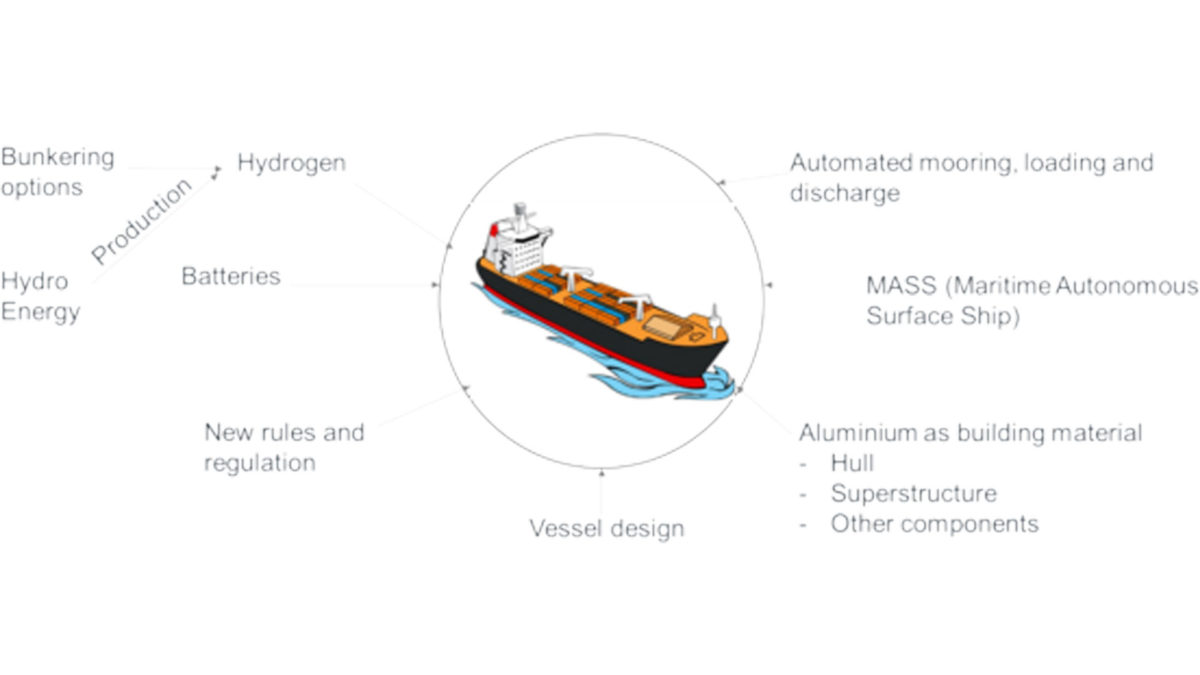Can a Hydrogen-powered cargo ship be technically feasible and competitive? If so, this could become the first zero-emission cargo ship in the world, potentially leading to a paradigm shift in the maritime industry.
Hydro Aluminium has regular transport to/from the Rotterdam area and its aluminium production located in Sognefjord, Norway. At the same time, Hydro’s energy division has access to renewable electricity at a competitive price, which contributes to an advantageous value chain and makes it possible to produce renewable hydrogen (H2) in the same area as aluminium is loaded on board the vessels. This pilot examines whether a H2-powered cargo ship is technically and economically feasible (including H2 production) and what barriers must be overcome to realise a new cargo ship with similar functionality to those currently in operation.
Status
The pilot study has been completed and the final report has been finalised. As expected, the calculations showed that hydrogen operations are more expensive than MGO (Marine Gas Oil), but perhaps somewhat surprisingly, it is still profitable based on a present value analysis. The pilot participants contributed with input to a common knowledge base for the costs of relevant types of cargo ships and logistics solutions with the necessary port infrastructure, and thus the possibility of calculating the profitability of hydrogen-powered sea transport of aluminium to the continent.
A number of assumptions have been made about possible solutions, such as type of cargo (Hydro vs. others), ship types, hydrogen type (compressed vs liquid), cash flows including operating costs over an intended contract length of 15 years, a calculated WACC2 (impairments) of 10% and a residual value of the ship equal to 10% of the newbuilding price.
The conclusion is that a hydrogen-powered cargo ship is not as unrealistic as one might expect. With similar support from authorities like in the case of Yara Birkeland, the ship would have been competitive. The pilot participants would like the work and the results to be used further in other concrete projects and thus contribute to the realisation of a hydrogen-powered cargo ship.
Read more
- 2019 Hydro(gen)ship pilot study report (Norwegian):

